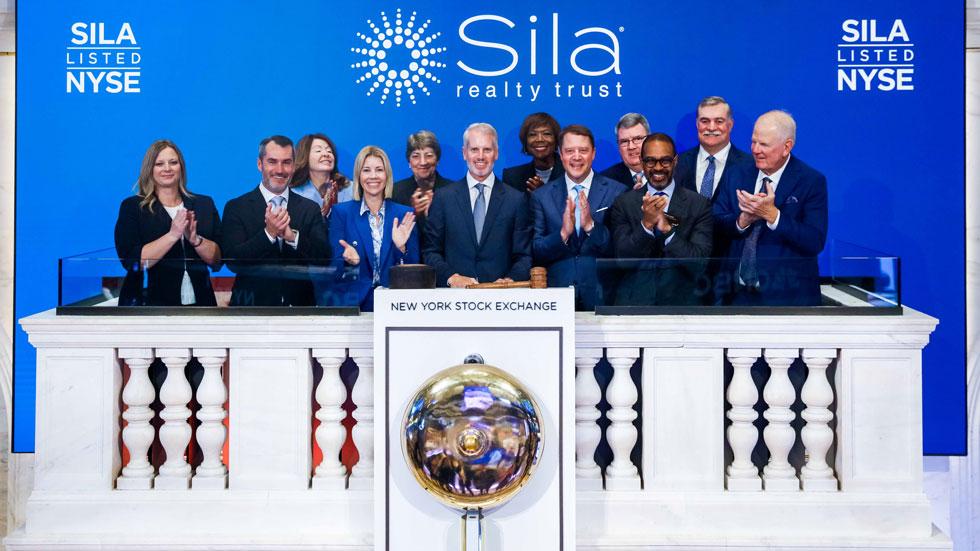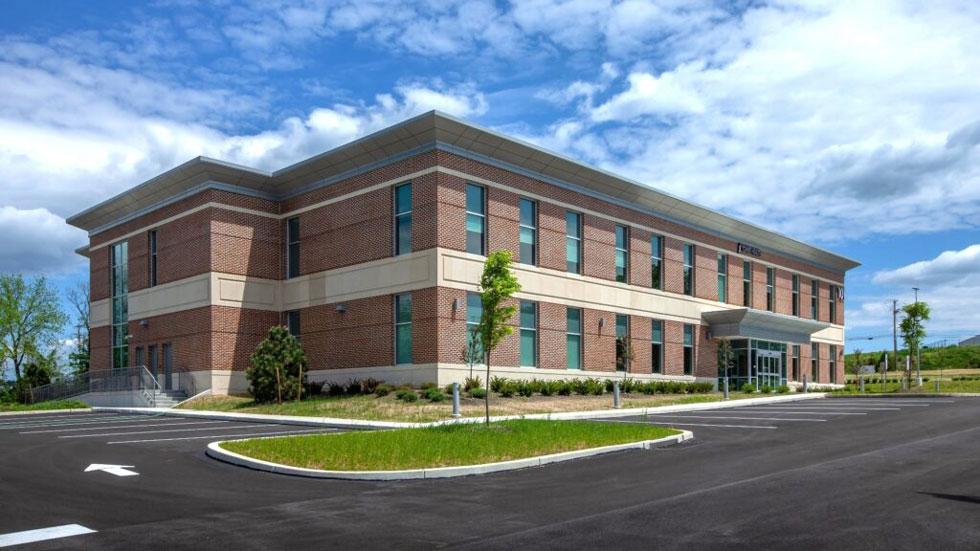
With an enterprise value of more than $2 billion, an asset base poised for growth, and a healthy, flexible balance sheet, newly listed Sila Realty Trust, Inc. (NYSE: SILA) sees ample opportunity ahead to expand its presence across the health care real estate sector.
Tampa, Florida-based Sila began trading on the New York Stock Exchange on June 13th.
Michael Seton, Sila’s founder, president, and CEO, says the REIT opted for a direct listing rather than an IPO because it does not need to raise equity capital at this time. “We have a substantial amount of dry powder to grow the company and move our strategic objectives forward over the next 12 to 18 months.”
Founded in 2014, Sila has been investing in net lease health care assets since its inception. Earlier investments in the technology space have been disposed of, with the sale of a portfolio of data center assets for $1.3 billion in 2021 completing that process. “Ultimately, we had a vision in the health care space. We believe it’s a bigger, growing, defensive, and a very sustainable market,” Seton says.
Sila invests in a range of assets across the health care continuum, including acute care, post-acute care, and outpatient facilities that are located primarily in Sunbelt markets. It does not invest in skilled nursing or senior housing. The portfolio consists of 136 properties with a lease rate of 99.2% in the first quarter.
Seton says a NYSE listing at this time provides an opportunity for new, particularly institutional, investors to buy stock at an attractive entry point and gives current stockholders, who have invested with Sila for the past decade, the chance to seek liquidity should they choose. Ultimately, when the Federal Reserve starts to lower interest rates, “we think we’ll see a lot of tailwind with REIT prices and that will play well with respect to the timing of a future capital raise,” he adds.
Seton describes Sila’s balance sheet as its “number one offensive tool” in the current market. Balance sheet highlights include a net debt to EBITDAre ratio of three times, alongside $590 million of liquidity. Sila CFO Kay Neely notes that the REIT recently extended a $250 million term loan by an additional three years with no interest rate spread increase to the company, adding that the loan was nearly 20% oversubscribed by Sila’s banks.
“We continue to have strength and flexibility in our balance sheet, with debt that is entirely pre-payable and unsecured, with no property-level financings,” Neely says. As a result, Sila is positioned to “ride out what may continue to be a little bit of a lengthier process as it relates to interest rates.”
Targeting Highest Quality Assets

During the past 14 years, Sila has established strong relationships with operators, health care systems, developers, and brokers, which have enabled the REIT to be highly selective when it comes to acquisitions.
Seton says the company generally tries to seek out off-market opportunities that “allow us to really bring the breadth and depth of the team’s experience to these transactions both with respect to capital, but also, more importantly, with skill set and creativity.”
Today, Sila has a robust transaction pipeline, Seton says, with a limited number of competitors in the marketplace. “The vast majority of companies are playing defense and triage with respect to their business plans and with respect to their balance sheets—and we are not,” he notes. “We have an ability to really take advantage of what we think are unique market opportunities to acquire some of the highest quality real estate in the marketplace.”
So far this year, Sila has acquired $135 million of institutional real estate. The transactions that have occurred in 2024 have been some of the highest quality deals that Sila has seen in many years, Seton says. That’s because, with less liquidity in the market, this is a favorable time to achieve the best risk adjusted returns, he adds.
Going forward, prior to any kind of equity capital event, Sila has a buying capacity of as much as $500 million. However, in order to maintain a moderate leverage profile, Sila plans to limit that buying capacity to about $300 million prior to any equity raise, Seton explains.
As to which segments of the health care sector Sila expects to target, Seton says the company would like to increase its medical outpatient building (MOB) portfolio and other lower cost patient settings. Currently, MOB accounts for 37.3% of the Sila portfolio. “We see a lot of very high quality MOB opportunities in the current marketplace really because there's so much emphasis on the growth in senior housing. This creates an opportunity for someone like us, that has both a focus and extensive experience in MOB transactions,” Seton says.
Focus on Strong Governance and Transparency

Over the last three years, Sila has refreshed its board of directors and appointed members with diverse perspectives and backgrounds in health care operations, REIT and direct real estate investing, and general financial expertise.
“We have always put our shareholders first with respect to disclosures, reporting, and transparency and responsiveness in our efforts to communicate to our stockholders,” Seton says. He notes that every inbound phone call or email to the company receives a reply—a policy that often surprises Sila’s shareholders.
Meanwhile, Neely adds that Sila’s low to moderate dividend payout ratio provides confidence and security to shareholders, and the REIT anticipates no change in its dividend strategy as a result of the listing.
Clear Strategy for Growth
While higher for longer interest rates and their impact on valuation levels are a challenge for all companies today, what Seton views as a particular focus for Sila is continuing to seek out best in class tenants in the health care industry. Sila has had “great success” in picking providers with dominant market shares in the past, and Seton is confident Sila’s experienced team can continue that track record going forward.
In addition to CFO Neely, who has been with Sila since 2016, the REIT’s executive team includes Chief Investment Officer Christopher Flouhouse, who recently joined Sila after an approximately 25-year banking career, most recently serving as head of real estate, gaming and lodging equity capital markets at Wells Fargo Securities.
Meanwhile, among other factors that Seton believes make Sila an attractive investment opportunity today is the company’s size. “We are already a company with size and scale, however, we’re not too big nor too small that we can't take advantage of opportunities in the marketplace to really grow shareholder value. Ultimately, if we target growing the company at 10% to 15% per annum, or $200 million to $300 million, that is very achievable and allows us to grow in a powerful manner.”
Seton says institutional reaction over the past month during Sila’s outreach to institutional investors prior to the targeted listing has been extremely positive. “We have a very clean story. We have a very clear strategy to expand our opportunity set and grow the company.”